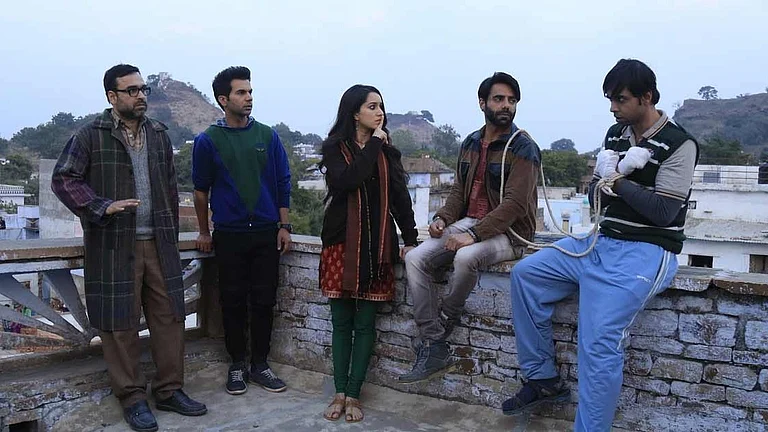It was the 90s. I was a kid scared to my bones, and loving the feeling—thanks to the Ramsay Brothers’ Zee Horror Show. My favourite time of the day was when I went to my neighbour’s house to watch the show. Soon, I became a fan of the horror genre, relishing desi vampires and daayans. I found a lot to like: kitschy makeup, shower scenes, damsels in distress, creepy havelis, dense forests, and what not.
The Ramsay Brothers pioneered the kitschy horror in Bollywood. Even though considered B-grade for being sleazy, comedic, and unrealistic, their films managed to spook me (at that age at least!). Who can forget Ajay Agarwal—the OG demon—the real “andheron ka shahenshah”? These movies had several commonalities: similar plots, recurring actors, shoestring budget, and, of course, the same horror.
Making their debut in 1972, with Do Gaz Zameen Ke Neeche, they flourished till the late ’90s. The next decade brought fresh perspectives to the genre, precipitating the Ramsay Brothers’ decline. Filmmakers such as Ram Gopal Varma and Vikram Bhatt came with new tricks—innovative storytelling, special effects, psychological horror—becoming the genre’s ‘second generation,’ serving an urban and affluent audience. Moving beyond the saree-clad chudails and heroines in bikinis, their films made us believe that horror could lurk in real life, too.
Varma and Bhatt began well in the ’90s and the aughts, making critical and commercial successes, but the latter’s form has dwindled over the last decade, with several duds littering his filmography, such as Shaapit (2010), Raaz 3D (2012), and Creature 3D (2014), where the most horrific thing about them was their mediocrity. The audiences had gotten tired of his shtick, much like Ramsay Brothers’, demanding change.
Enter Maddock Films, producing such dramas as the Stree franchise, Bhediya (2022), and Munjya (2024). These box-office hits and prodded the audiences to think, blending folklores, legends, and myths. They also combined horror and comedy, first popularised in recent decades by Akshay Kumar-starrer Bhool Bhulaiyaa (2007). Maddock’s horror comedy universe is a treasure trove of tales that have timeless appeal and fascinating folklores. They have been passed down through generations, so the audiences can relate to them. The success of these films proves that audiences are keen to watch original films with diverse stories and storytelling. Besides Maddock’s movies, a few more horror-comedies have done well in the last few years, such as Golmaal Again (2017) and Bhool Bhulaiyaa 2 (2022), showing how this genre, even otherwise, has done well.
Film exhibitor Akshaye Rathi says Bollywood filmmakers have still not tapped the complete potential of this genre, which can also get a fillip by A-list stars. Citing Stree 2, he said, “It has very good actors, be it Rajkumar Rao, Shraddha Kapoor, Pankaj Tripathi or Aparshakti Khurana or the rest of the cast. None of them are stars whose face on a poster sells tickets. It’s the quality of the film that matters the most. He believes this genre has a lot of scope, but filmmakers must be careful about “unfortunate and stupid trends” that the industry falls for every now and then, like following a herd. “There was a trend of making biopics, which produced some atrociously boring films,” he added. “So, filmmakers should utilise the genre well. They should ensure that they don’t oversaturate and bore the people.”
Executive Director of Gaiety Galaxy and Maratha Mandir Cinema, Manoj Desai is happy that horror films are doing well at the box office. He said, “There was a time when films of Ramsay Brothers did well. It had good music and horror. Public was interested in watching those films and they were not concerned about the story. But nowadays they don’t want to compromise on good story and script. Films like Munjya did well because it was a content-driven film. I ran it for 15 weeks. Now Stree 2 is doing great business. So, I see a very bright future of this genre.”


















